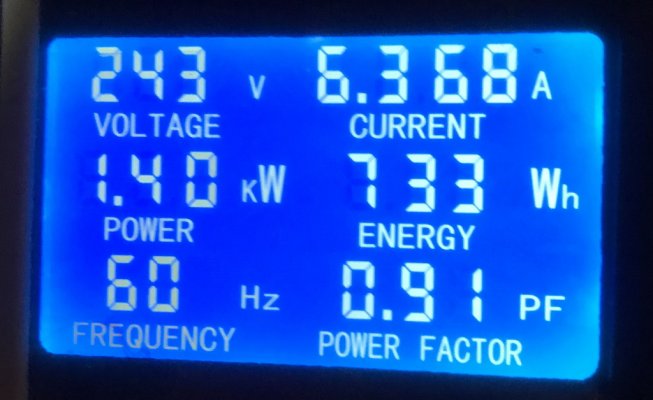Can someone remind me what type of generator this is? I tried to look back, but just can't find it in the thread. I see that it is a 12.5k. But, I am curious for the make and model. I'd like to see what type of generator it is w.r.t. how it produces the power. Some work very differently than conventional generators assembling 60 hz sine-wave AC from higher frequency components.
I'm also still extremely curious for the simple voltages, and frequency measurement if the available DVM can produce it, under working and non-working conditions. For the voltage measurements, I'd like to know if RMS or peak is being reported.
And, I'd love a photo of the wiring diagram that is usually on or inside the controller of HVAC units, or otherwise attached to the unit or possibly in the manual. A wiring diagram for the generator, charger, HVAC units, and any other significant loads would be nice, too. In particular, I am curious about the lengths of the wiring, the gauges, and the mechanical connections, e.g. junction boxes, couplings, etc.
There seems to be a somewhat common underlying belief that the charger or generator is just incompatible with the HVAC unit (or, for semantics, vice-versa), likely due to the charger producing noise or generator putting out a bad wave under very, very modest load. And, this is surely a possibility.
But, I continue to believe that the operating specs for the charger and every major make/model of that class of generator ensure that, if working correctly, they'll be compatible with any reasonable load. And, I have no reason to believe that a simple fan and controller are, by design, an unreasonably load.
Instead, I don't believe this is a compatibility issue or a spec issue. I think something is broken, either internally or in installation or configuration. I'm wondering about things such as voltage loss due to wiring that isn't the right gauge, or corroded and has contact resistance, or the way the generator's output is tuned, or if a surge or output short ever damaged the charger's input filtering or output filtering, the condition of the brushes on the generator (if it has them), etc.
I'd really like to help, but we don't have a lot of the normal debugging data here, just the very coarse information about a small few situations when it works and when it doesn't -- that could be muddied by circumstances we haven't yet thought to isolate.
I get that no oscilloscope is available. But, I'm hoping that voltage and frequency measurements, which take seconds to acquire, can be provided. Ditto for the make/model of the generator (if it hasn't been), and the wiring diagram.
I'd love to try to help. But, I just don't think I have enough information to do more than wildly speculate. So, all I can really offer is Occum's Razor.




